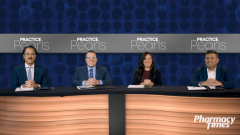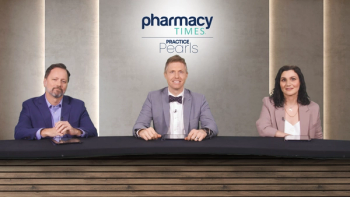
Impact of Real-World Data on Hemophilia A Practice
Lisa Schrade, PharmD, explores the implications of real-world data comparing standard half-life and extended half-life products in hemophilia A treatment.
Episodes in this series

Jonathan Ogurchak, PharmD, CSP: Well, I think that that kind of leads into some of our next topics we wanted to talk about, which is advancing practice. We talked about new therapies. We talked about what's kind of ahead of us, but there's a lot of more recent data that's been coming out in the hemophilia A populations, both from clinical trials in real world, that is having a significant impact. Dr Schrade, what types of things have you seen from a real-world perspective that may have demonstrated the standard half-life products versus the extended, factory prophylactic products as far as adherence, bleeding, things of that nature, and how might those data have impacted your practice?
Lisa Schrade, PharmD: So, real world data in a published study actually showed that the difference between standard half -life products and extended half-life products, they actually saw better adherence rates and annual bleed rates with the standard half-life products, but you have to evaluate the total picture, right? Patients that are on extended half-life products now, were they put on those products before because there already were adherence issues? When you're talking about the adherence being lower in extended half-life products, that just might be the behavior of the patient themselves. As far as the annual bleed rate, the increase that was seen with the extended half-life versus the standard half-life products, they were minimal. They weren't severe bleeds like joint bleeds or head bleeds, things like that. It was more like bruising, increased bruising that was seen in the study. But again, when it comes down to it, you're looking at the total picture. If you have a patient that you're having compliance issues with when you're talking about standard half-life products, it could be an every other day, every day infusion versus the extended half-life products where they can push it out maybe every three to four days. So just giving that a little bit more buffer for them to have those less frequent infusions, less administration, because it is cumbersome for the whole total setup, mixing of the medication, allotting time during the day. There's a lot of factors that go into play when they're trying to administer the medication. It's not just like a quick, like you draw it up and you just shove it right in. You have to lay out a sterile field. You have to have everything set and ready to go. Mixing of the vials can be cumbersome. A lot of patients just can't hit one dose with a single vial. Sometimes there's multiple vials. I have some patients that have between five and seven vials per infusion. If you think about that, you have to mix because it comes in a life powder with the diluent. You have to mix each one of those vials. Then you have to draw it up. Then you have to take the time to infuse. When the infusion rate is between four to five milliliters per minute, and you've got anywhere upwards of like 50 mm per infusion, you're sitting there for a good chunk of time. And if you're a busy parent or a busy child, busy adolescent, there's no time for that. So again, that's why when we're evaluating these studies, we kind of have to look at the total picture. Plus, too, just the population study base in and of itself, because hemophilia is such a small, designated disease state. Trying to get a large sample population, it's kind of hard. There's those limitations when you're looking at studies in total.
Transcript is AI generated and reviewed by a Pharmacy Times editor.
Newsletter
Stay informed on drug updates, treatment guidelines, and pharmacy practice trends—subscribe to Pharmacy Times for weekly clinical insights.














































































































































































































